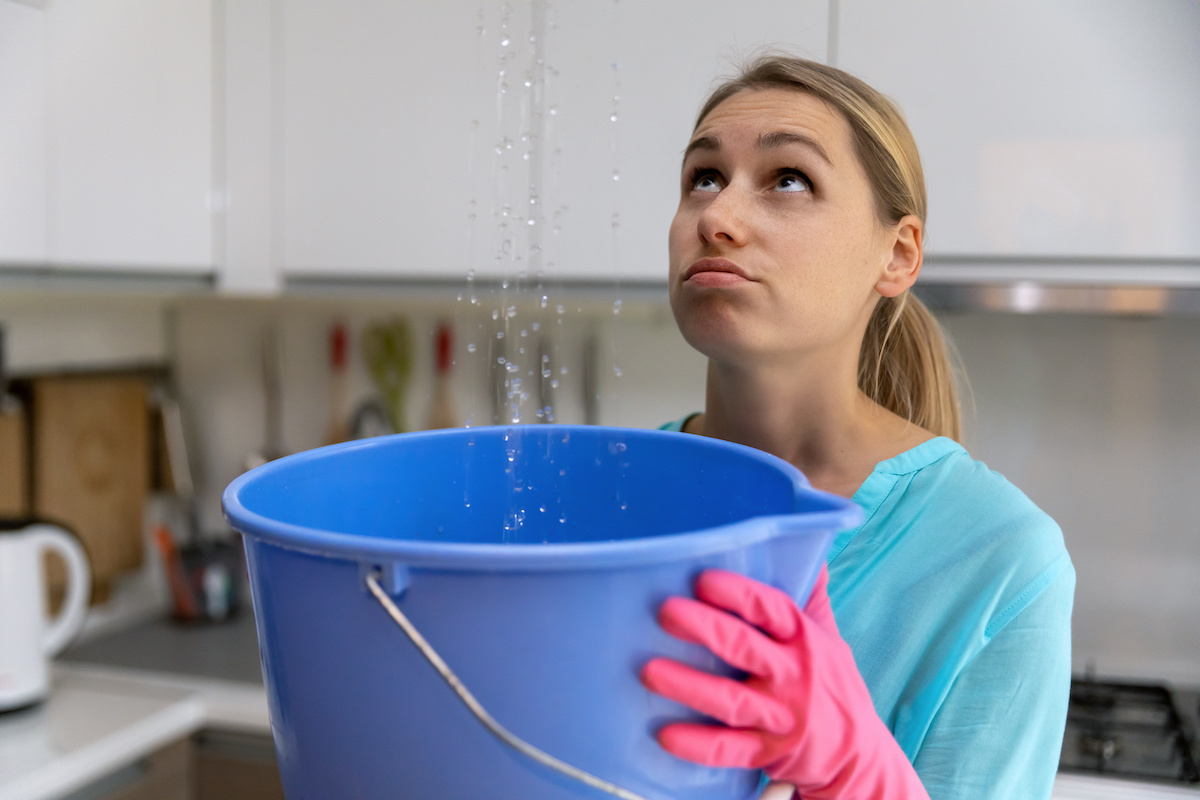Your House's Principal Common Triggers of Leak Problems: Thorough Investigation
Your House's Principal Common Triggers of Leak Problems: Thorough Investigation
Blog Article
The author is making several great pointers about Top Causes of Home Water Leaks as a whole in this post down the page.

Leaks not only create waste of water but can likewise trigger unnecessary damage to your house as well as advertise unwanted organic growth. Water leaks might go unnoticed since many of the pipework in our house is hidden. By looking and understanding for day-to-day scenarios that trigger leaks, you can secure your house from future leaks and unnecessary damages. Today, we will certainly check out six leakage triggers that may be causing your pipelines to trickle.
Intruding origins
Many water leakages start outside the home instead than inside it. You might see wet patches or sinkholes in your backyard, and that may mean that tree roots are attacking water lines triggering water to permeate out.
Corroded water supply
As time goes by, your plumbing system ages and deterioration such as rust may begin gnawing the pipes. This could be the source of staining or bending on your water pipes. This requires an assessment with your plumber promptly. Think about changing the pipelines given that they are at a higher danger of deterioration than the more recent models if our plumbing system is old.
Defective Pipeline Joints
The factor at which your pipelines connect is frequently the weakest web link in the waterline. Pipe joints can deteriorate over time, resulting in water leaks. The majority of pipe joints are not easily visible. If you have noisy pipelines that make ticking or banging sounds, specifically when the warm water is switched on, your pipeline joints are most likely under a great deal of stress. It is a good idea to have your plumber check your system once a year.
Instant temperature adjustments.
Severe temperature level modifications in our pipelines can trigger them to expand and get all of a sudden. This growth as well as contraction might cause cracks in the pipelines, specifically if the temperature are below freezing. It would be best if you watched on exactly how your plumbing works. The visibility of the formerly discussed circumstances often indicates a high threat.
Poor Water Connectors
At times, a leakage can be caused by loosened hose pipes and pipes that supply your appliances. Most of the time, moving is what causes the loose water Links. You might locate in the case of a cleaning machine, a tube may spring a leakage due to trembling throughout the spin cycle. In case of a water connections leak, you might see water running straight from the supply line or puddles around your devices.
Clogged Drains
Blocked drains may be annoying as well as inconveniencing, but they can often end up creating an overflow resulting in break pipes. Keep getting rid of any products that might go down your drains pipes that can clog them to prevent such aggravations.
All the above are sources of leaks but not all water leaks arise from plumbing leaks; some leakages may come from roof covering leaks. All leaks must be repaired right away to avoid water damages.
Leaks not just create waste of water yet can also trigger unneeded damage to your home as well as advertise undesirable natural development. By looking and comprehending for daily circumstances that trigger leaks, you can secure your residence from future leakages and also unnecessary damage. Today, we will certainly look at six leak causes that may be triggering your pipes to leak.
At times, a leak can be caused by loose hose pipes as well as pipelines that provide your devices. In case of a water connections leak, you may see water running straight from the supply line or pools around your devices.
How To Check For Water Leak In Your Home
How To Check for Leaks
The average household's leaks can account for nearly 10,000 gallons of water wasted every year and ten percent of homes have leaks that waste 90 gallons or more per day. Common types of leaks found in the home are worn toilet flappers, dripping faucets, and other leaking valves. These types of leaks are often easy to fix, requiring only a few tools and hardware that can pay for themselves in water savings. Fixing easily corrected household water leaks can save homeowners about 10 percent on their water bills.
To check for leaks in your home, you first need to determine whether you're wasting water and then identify the source of the leak. Here are some tips for finding leaks:
Take a look at your water usage during a colder month, such as January or February. If a family of four exceeds 12,000 gallons per month, there are serious leaks.
Check your water meter before and after a two-hour period when no water is being used. If the meter changes at all, you probably have a leak.
Identify toilet leaks by placing a drop of food coloring in the toilet tank. If any color shows up in the bowl after 10 minutes, you have a leak. (Be sure to flush immediately after the experiment to avoid staining the tank.)
Examine faucet gaskets and pipe fittings for any water on the outside of the pipe to check for surface leaks.
Undetected water leaks can happen without the home or business owner even realizing. If you suspect a water leak, but not able to find the source. It is time to contact a professional water leak detection service, The Leak Doctor.
How To Find a Water Leak In Your Home
https://www.leakdoctor.com/blog/How-To-Check-For-Water-Leak-In-Your-Home_AE197.html

I'm very fascinated by How Fast Water Damage Can Ruin Your Home and I'm hoping you enjoyed reading the blog posting. Sharing is good. One never knows, you may very well be doing someone a favor. Thank you so much for taking the time to read it.
Call Us Today Report this page